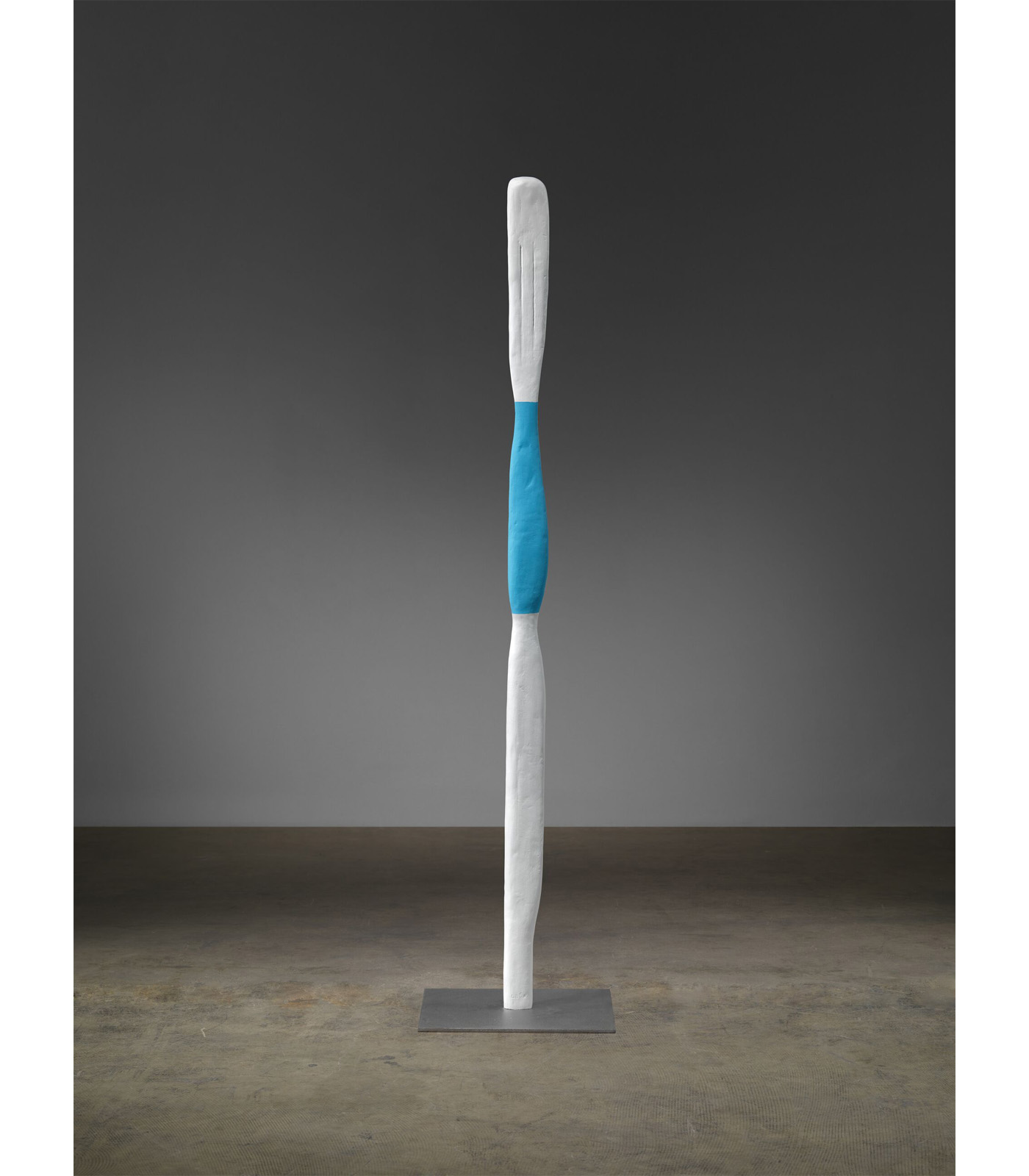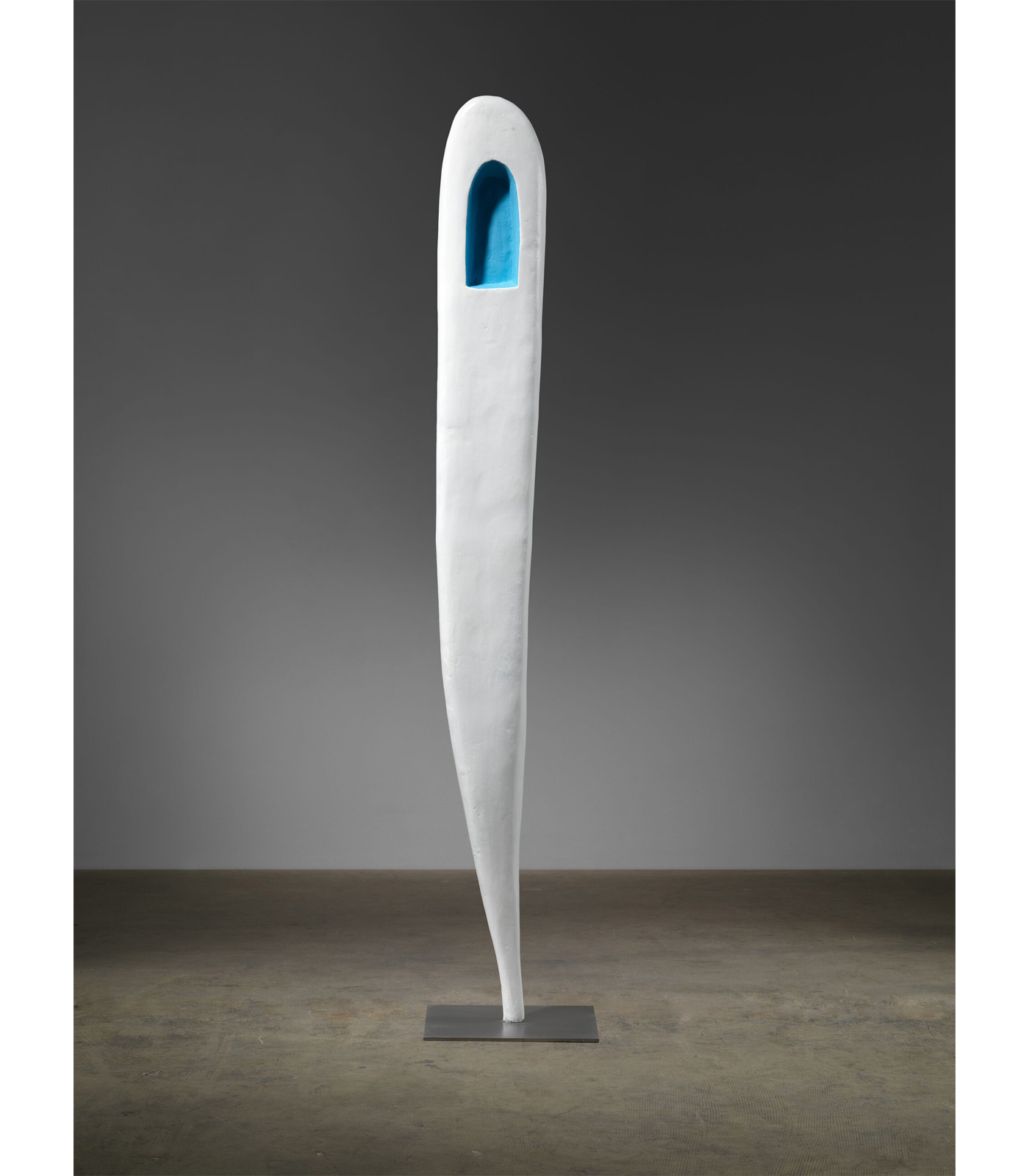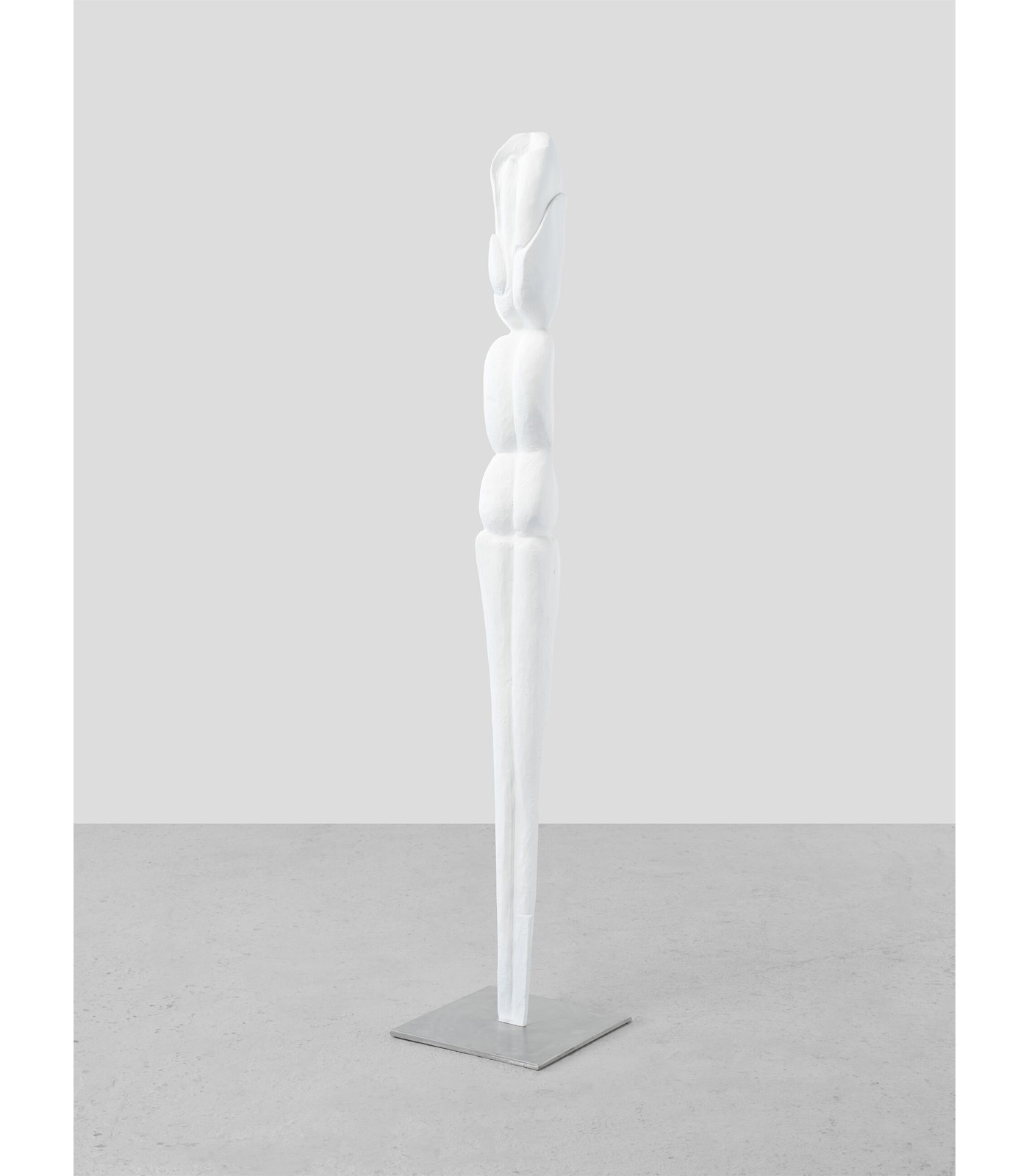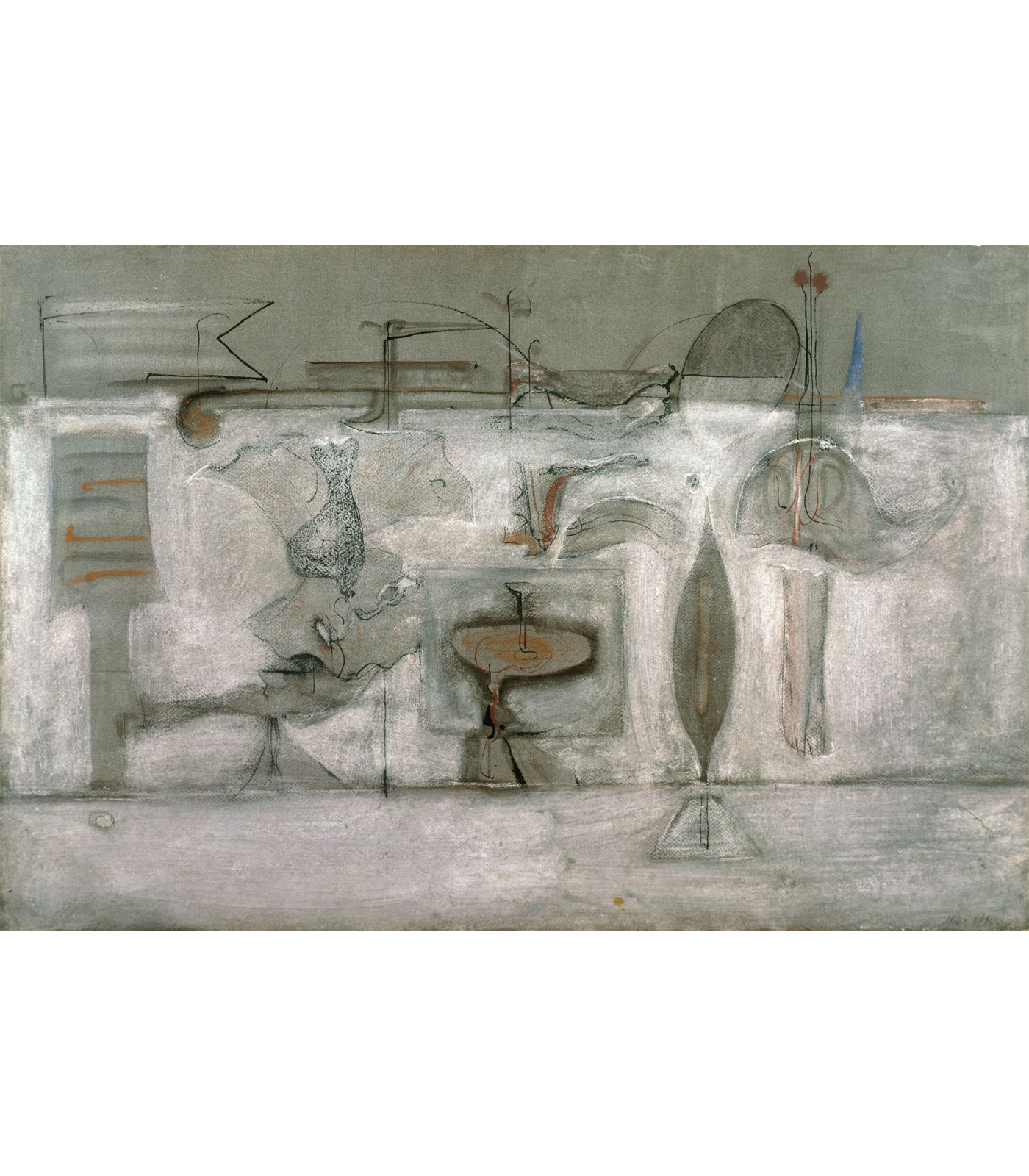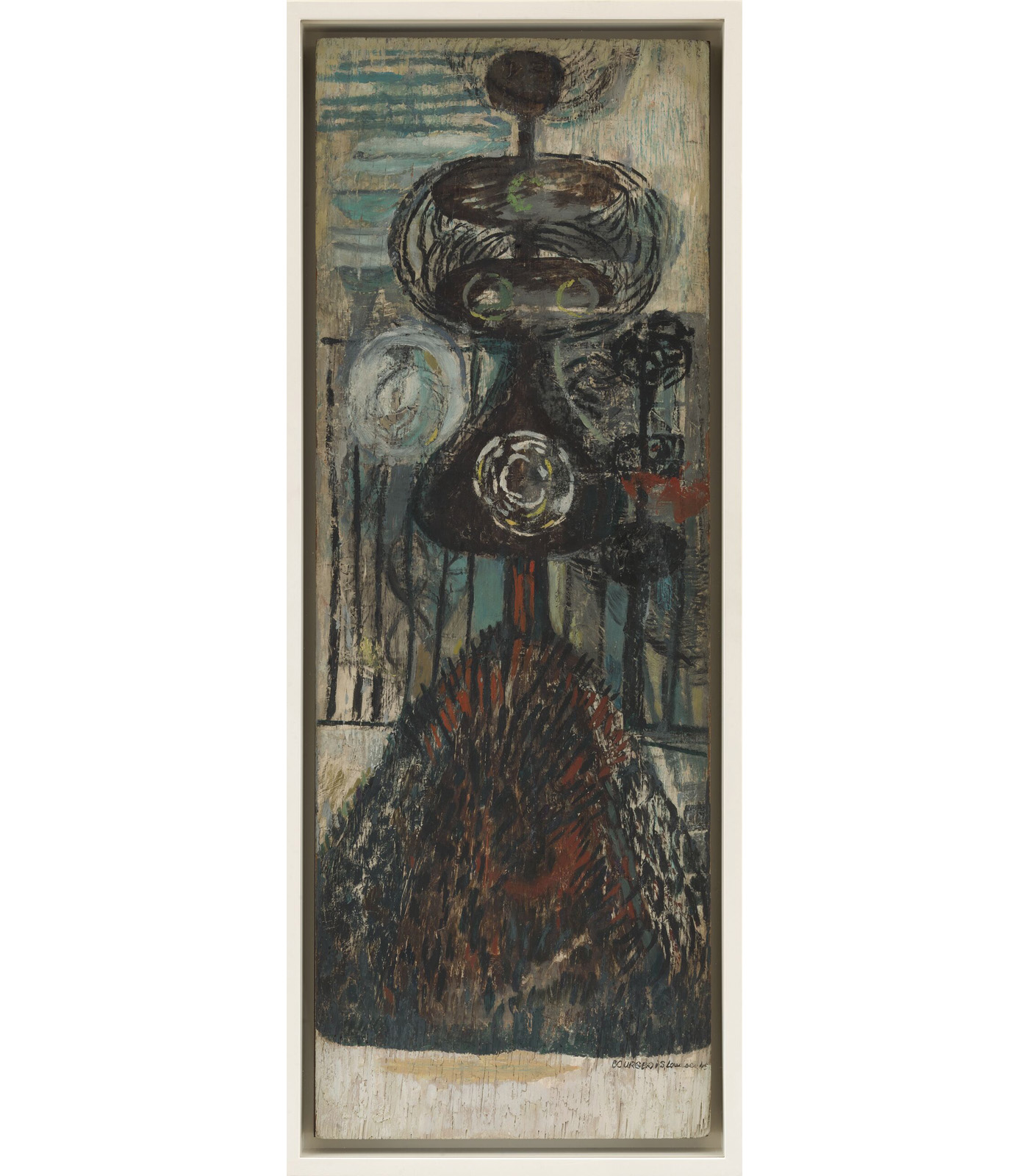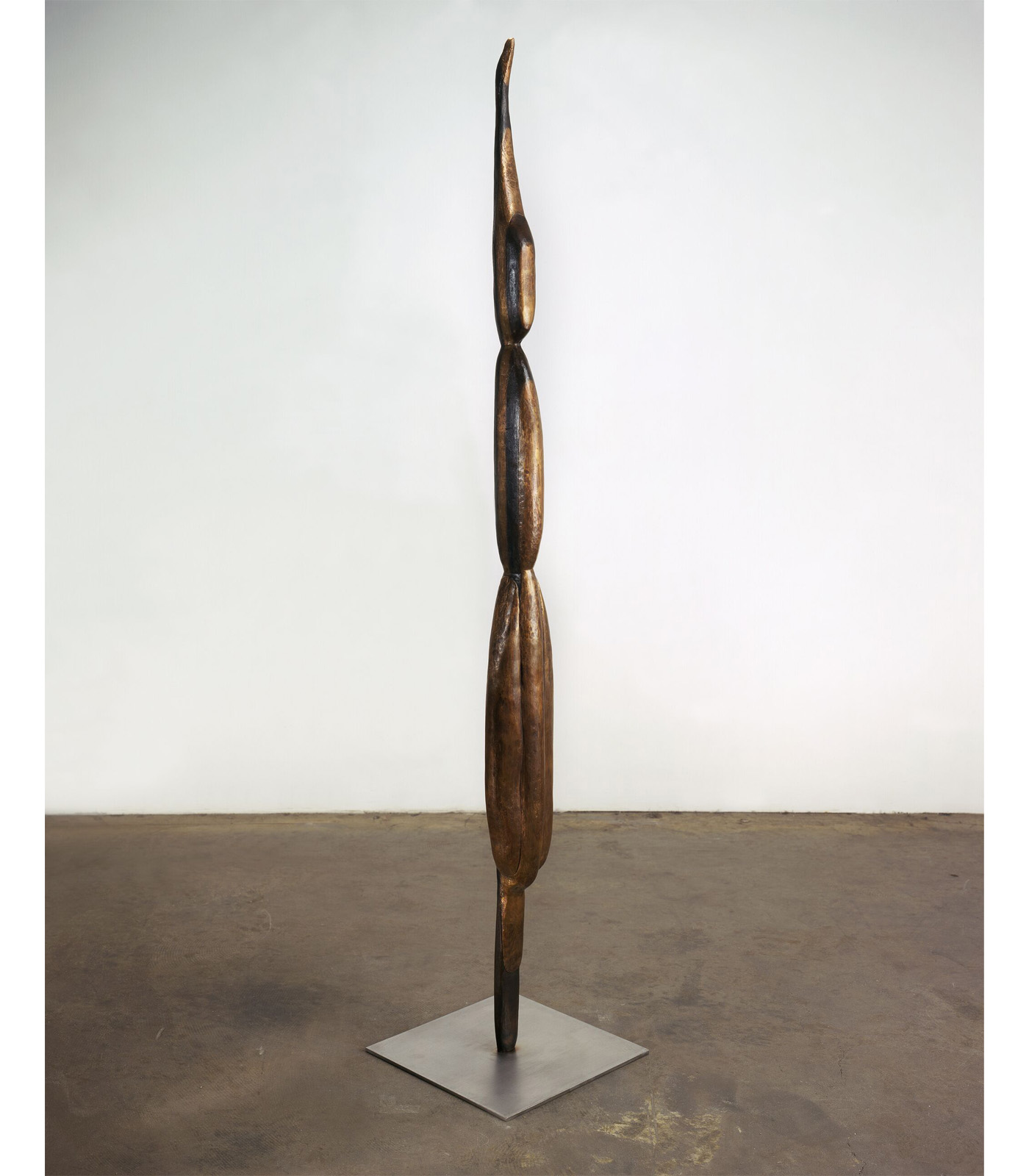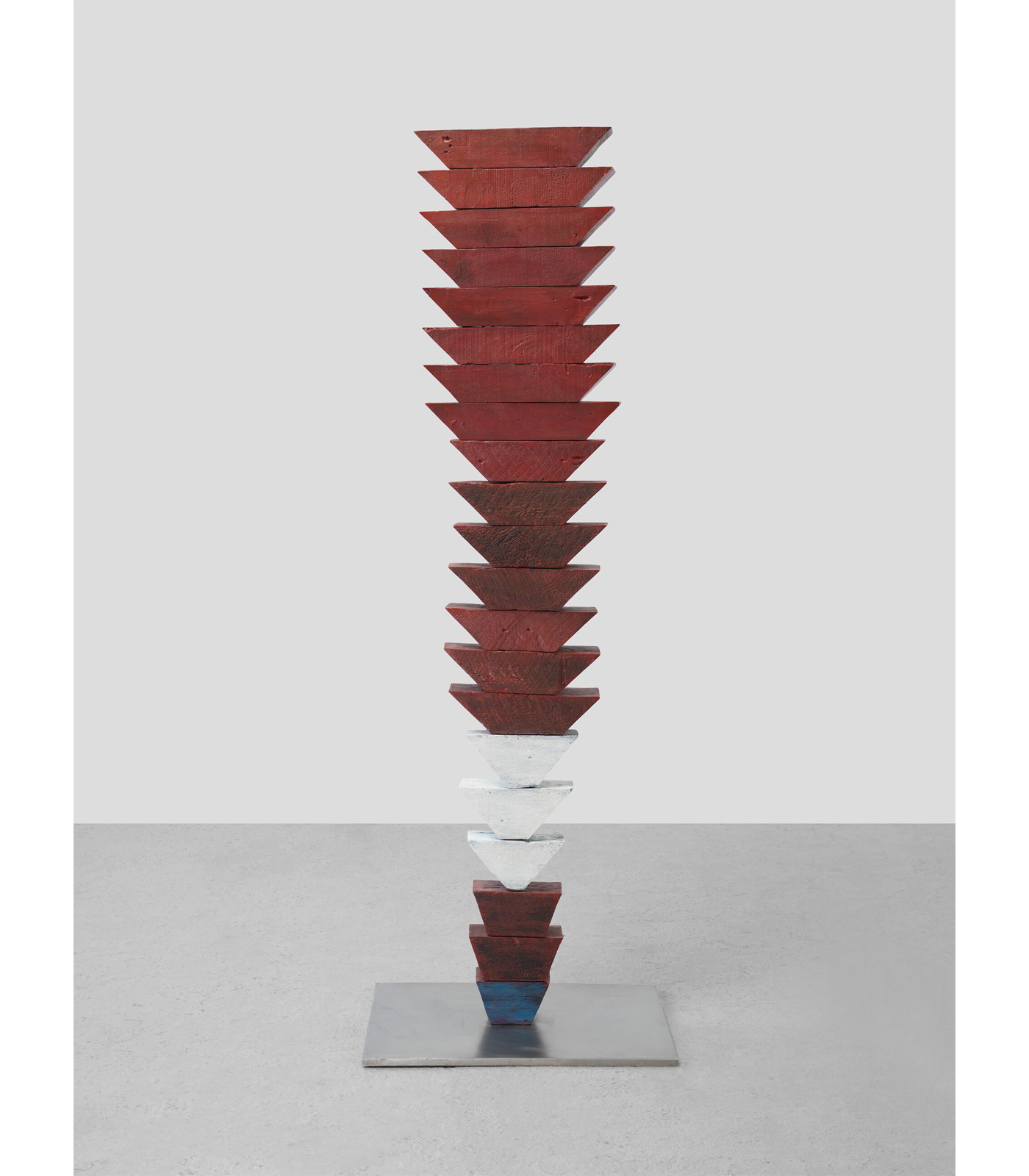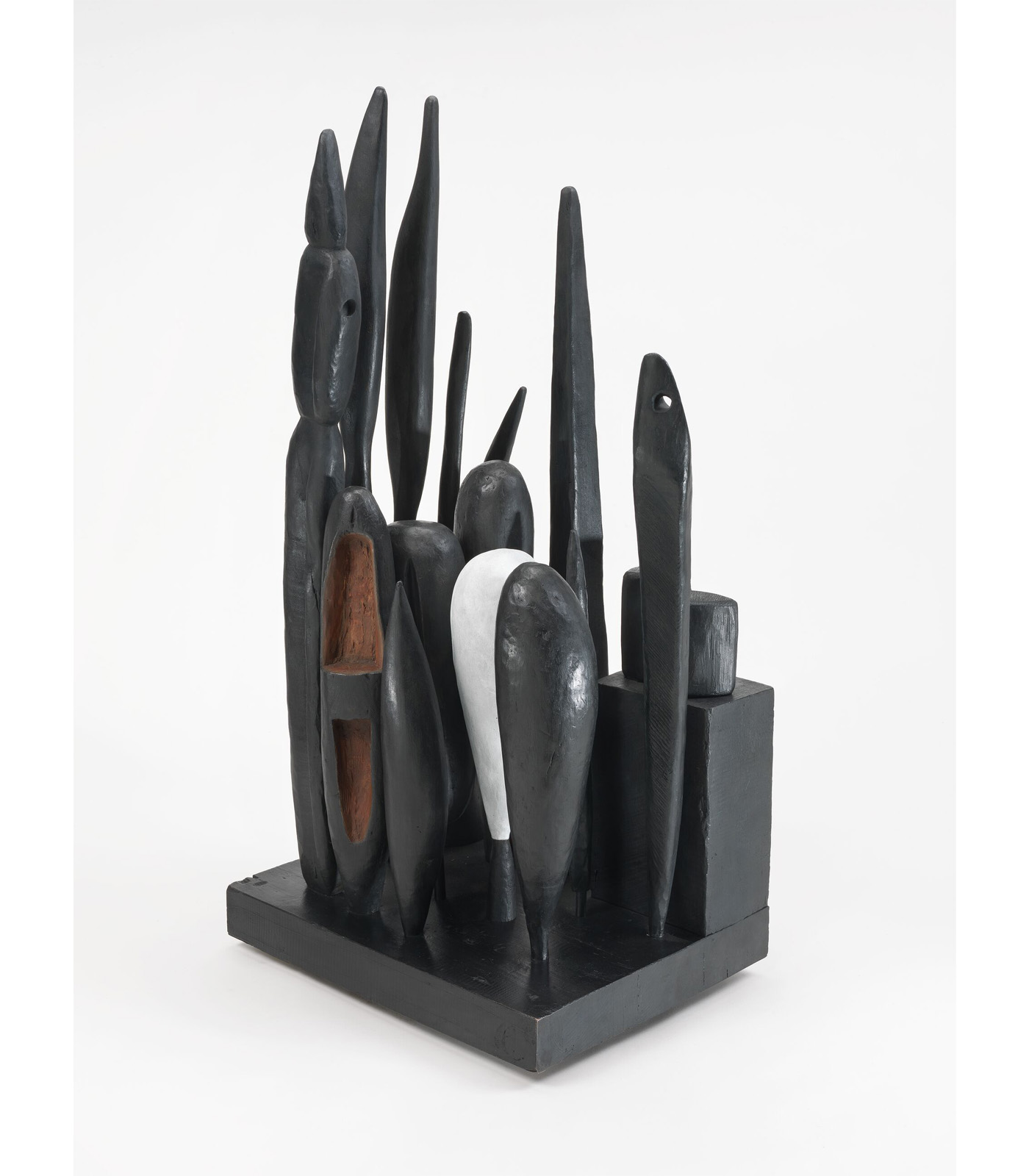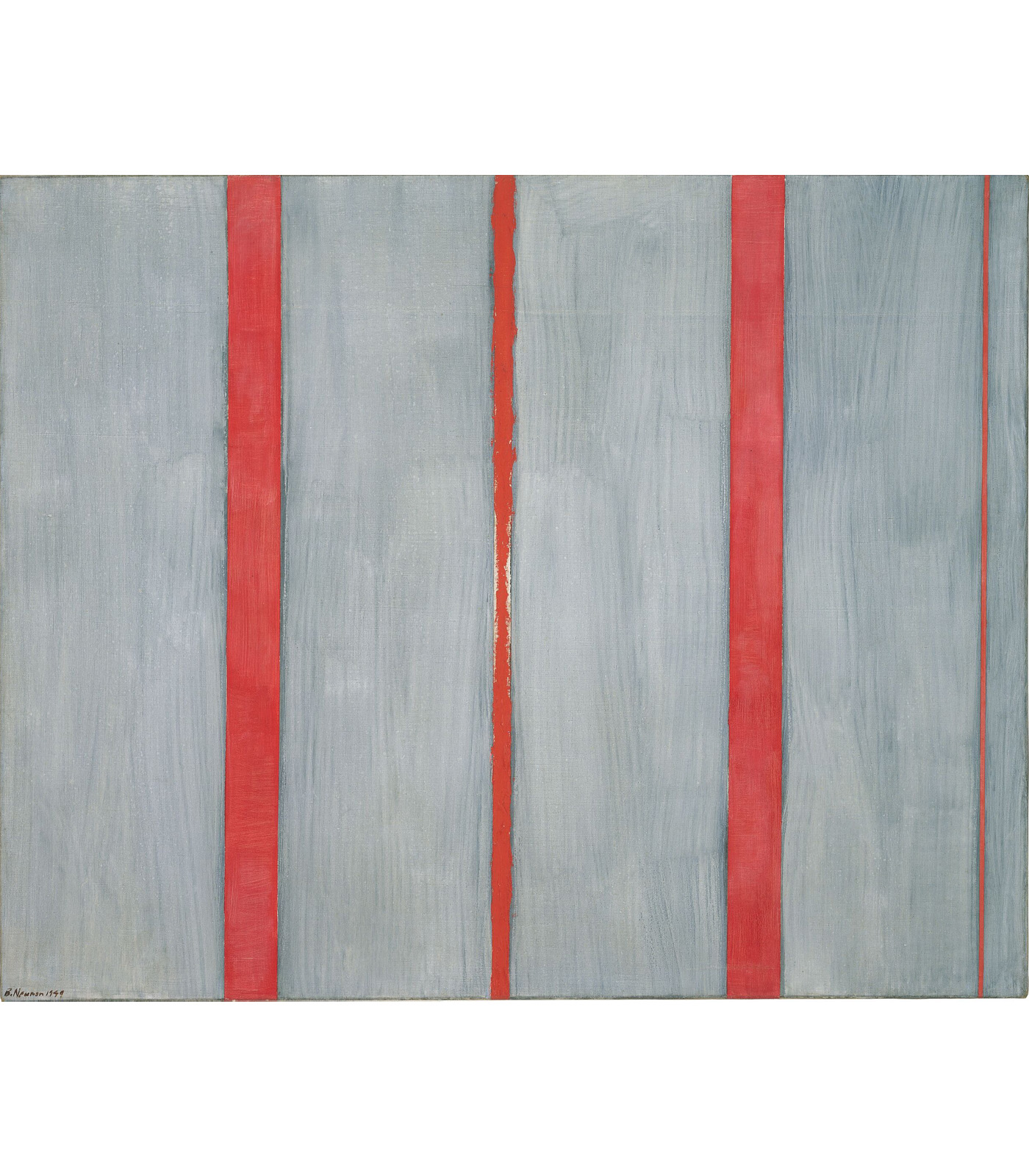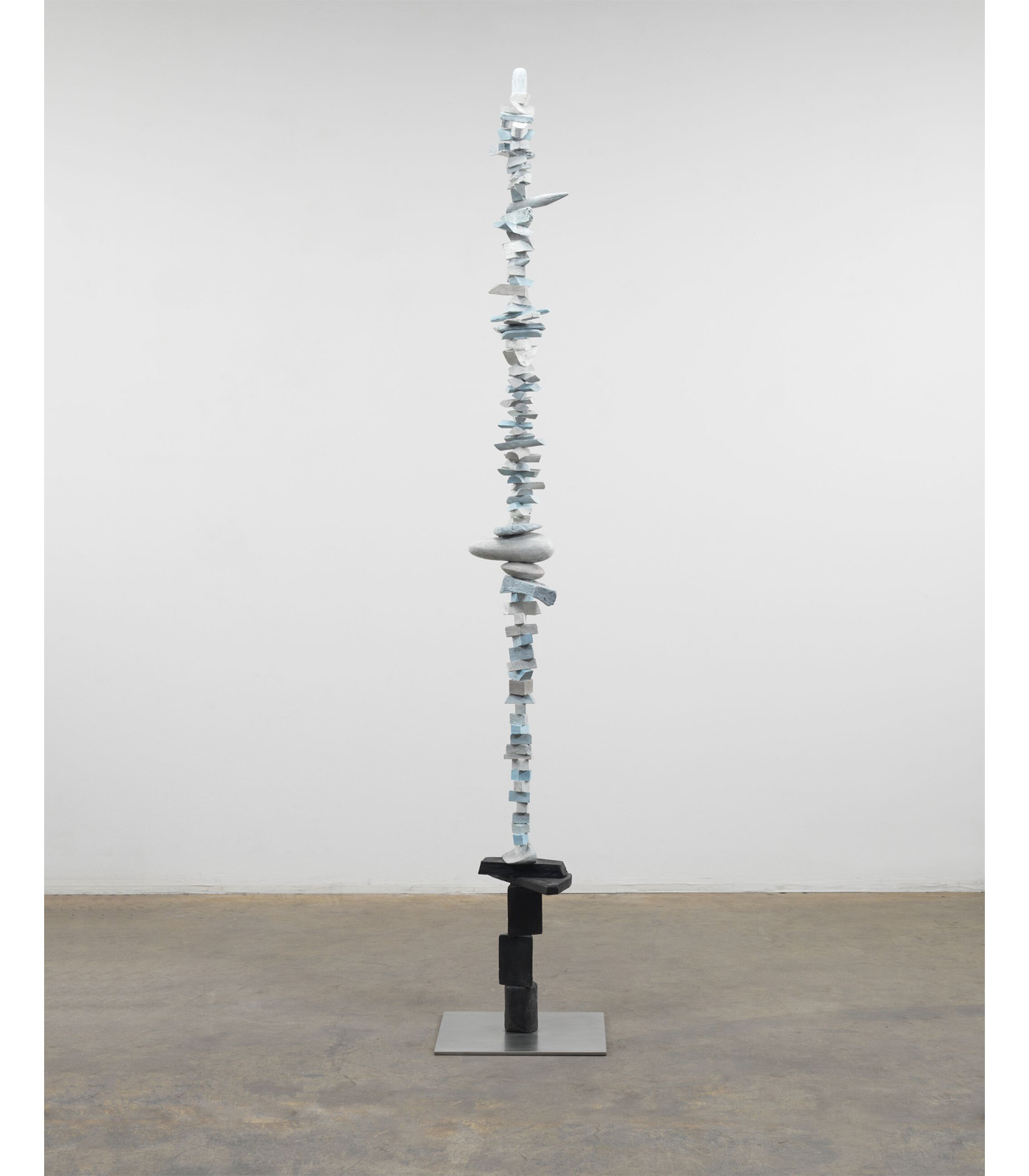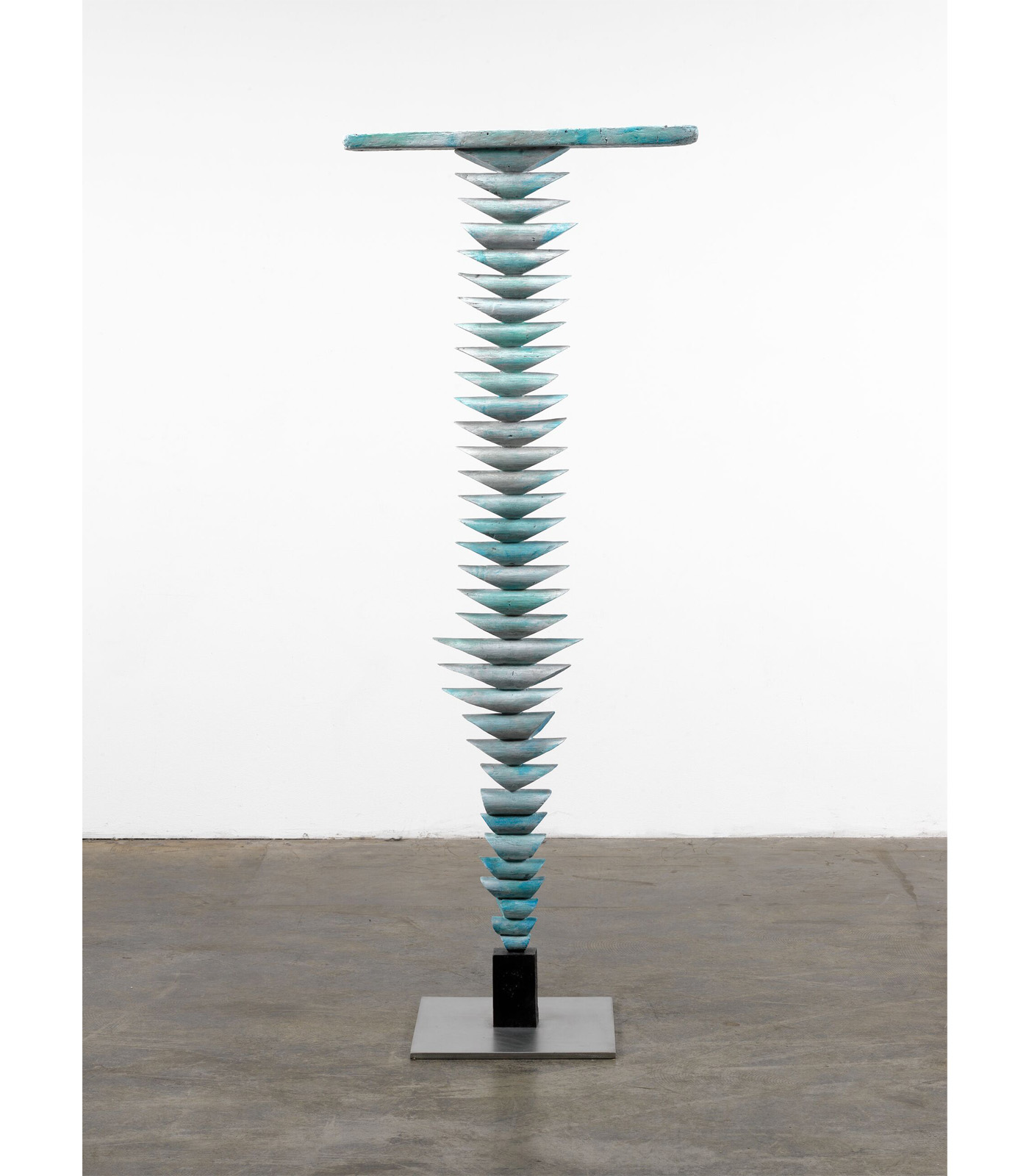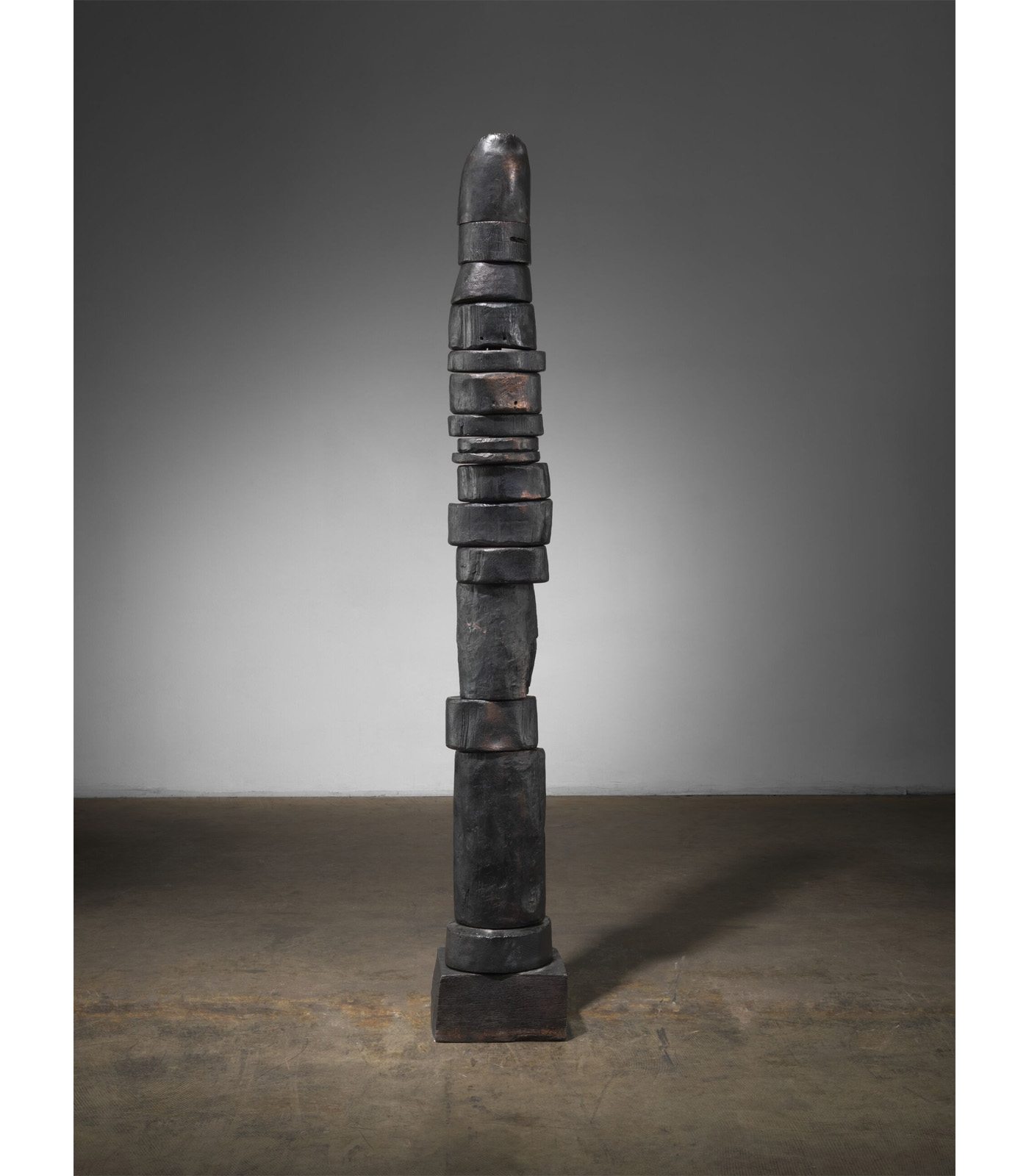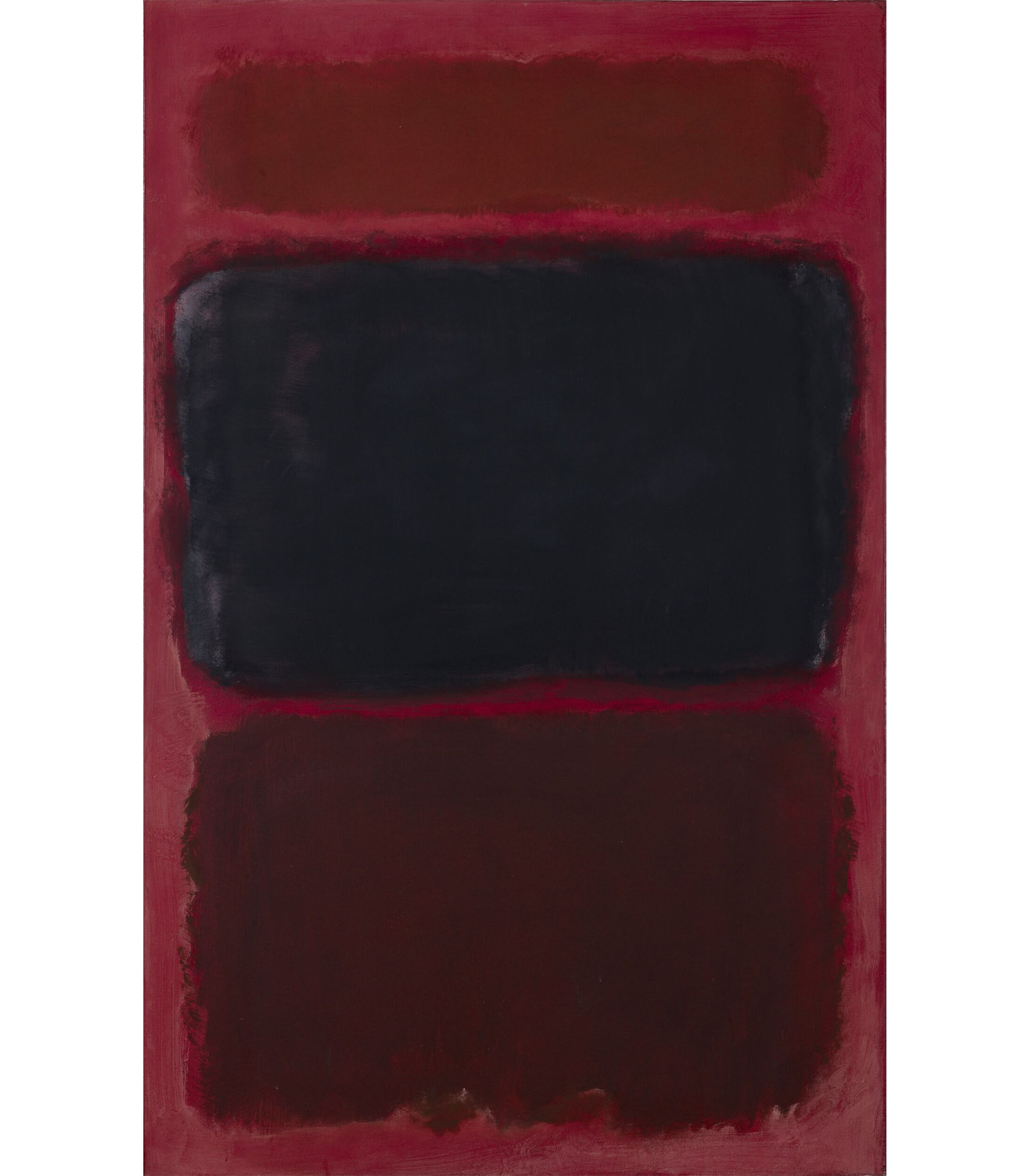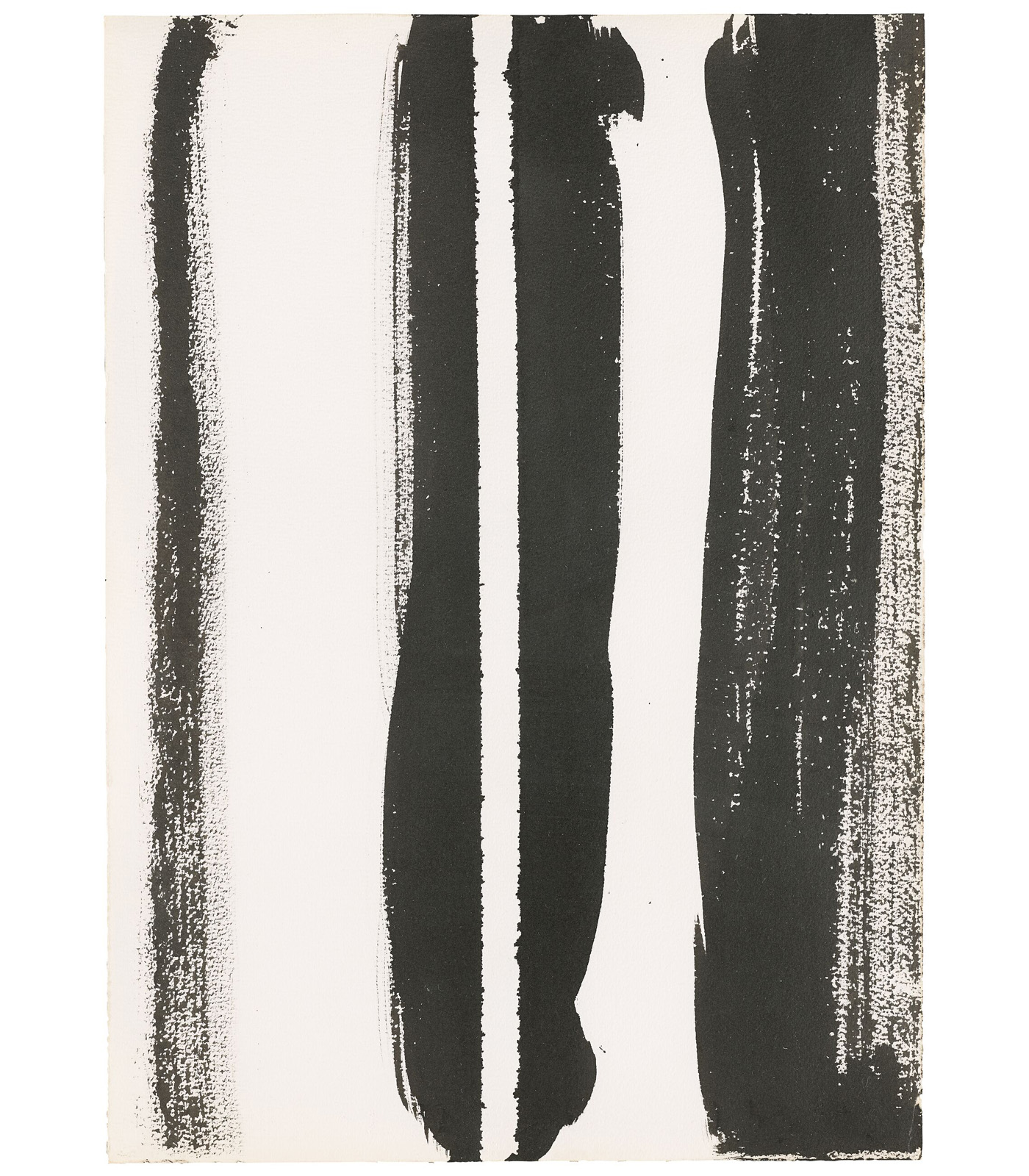
The God that Failed
LOUISE BOURGEOIS, BARNETT NEWMAN, MARK ROTHKO
9 Jun – 16 Sep 2023
Zurich, Bahnhofstrasse
Curated by Philip Larratt-Smith, ‘The God that Failed’ explores the thematic and formal links among three important artists from the New York School: Louise Bourgeois, Barnett Newman and Mark Rothko.
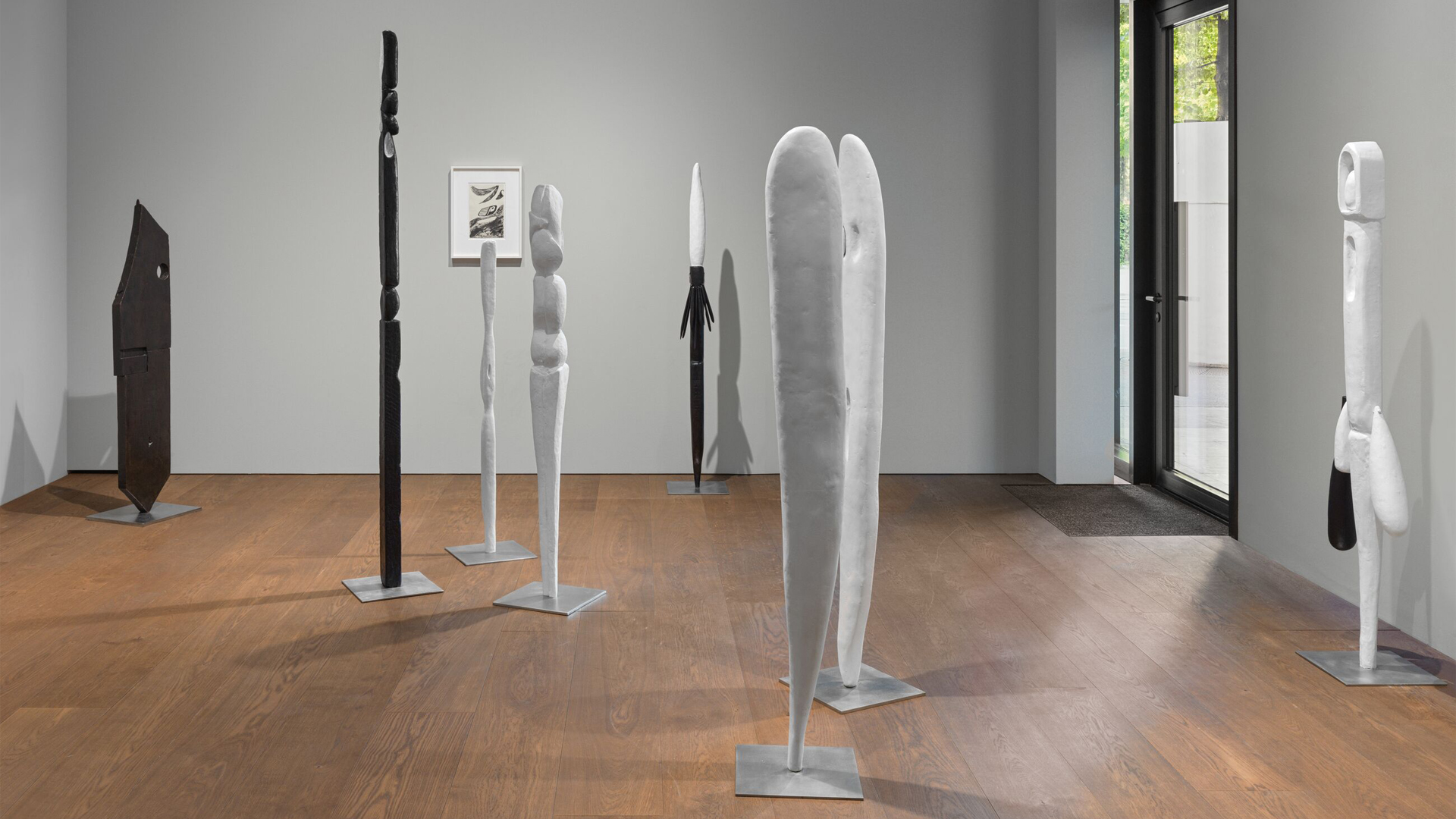
Bourgeois’s Personages from 1946 to 1954 are placed in dialogue with paintings and drawings by Newman and Rothko from the same period. All three artists knew each other, showed together and participated in talks and panels in the 1940s and 1950s. All three would make the pivot in their work from biomorphic figuration to abstraction and geometry. The title of the exhibition refers to a crisis in the concept of authority, be it the father figure, abstraction, psychoanalysis, the sublime or the emancipatory promise of radical politics, and more generally to the postwar atmosphere of existential angst.
‘My work has to do with the testing of authority (emotional authority symbolized by geometry). The god that failed.’—Louise Bourgeois
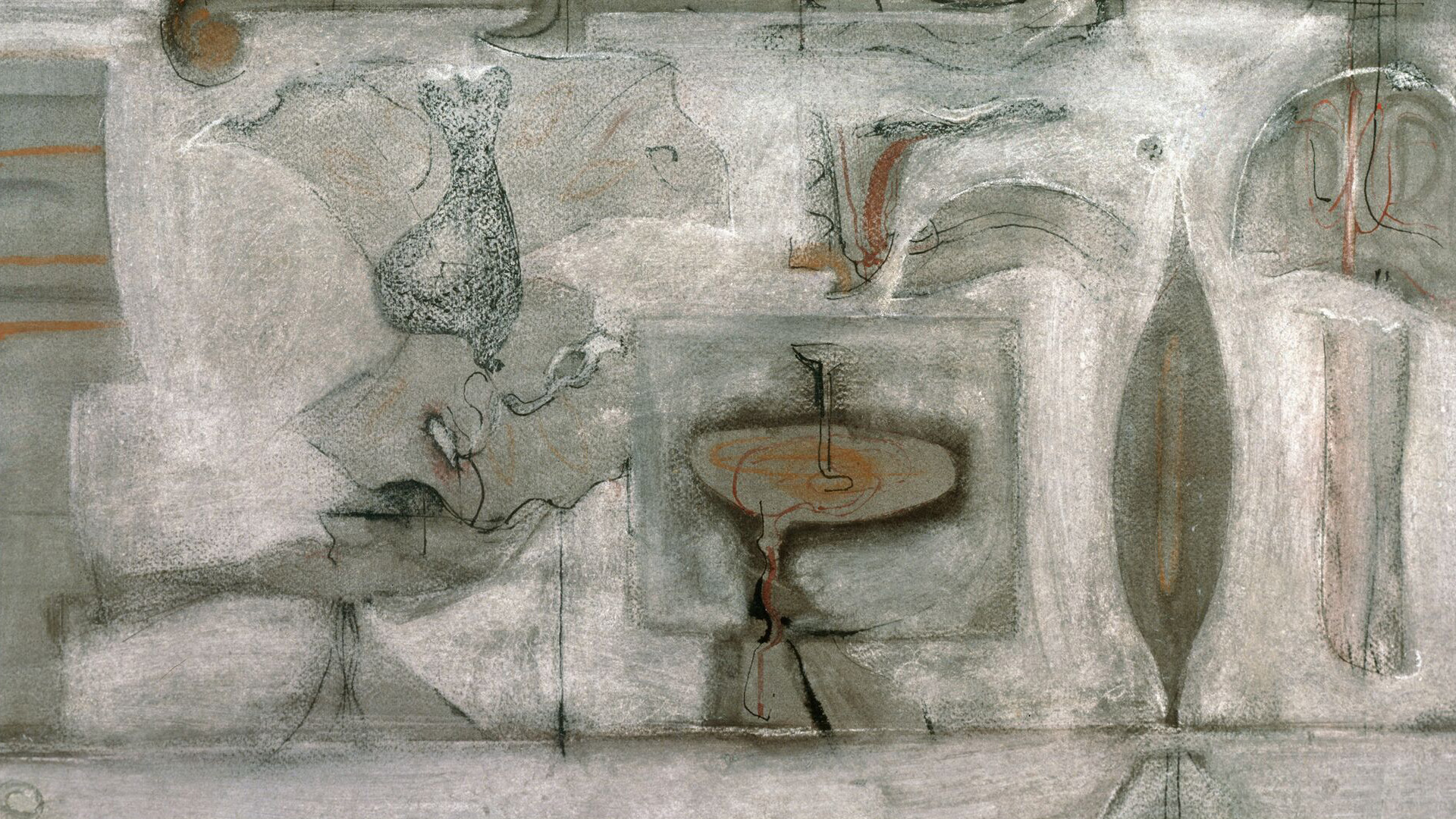
Bourgeois, Newman and Rothko arrived at artistic maturity after having absorbed the impact of Primitivism and Surrealism. This led to groundbreaking formal inventions—Newman’s zips, Rothko’s floating rectangles, and Bourgeois’s radical installation of her sculptures. For all three artists, the relationship to space (both real and symbolic) and architecture was crucial in that it foregrounded the experiential nature of art, the range of meanings produced through the viewer’s interactions with it.
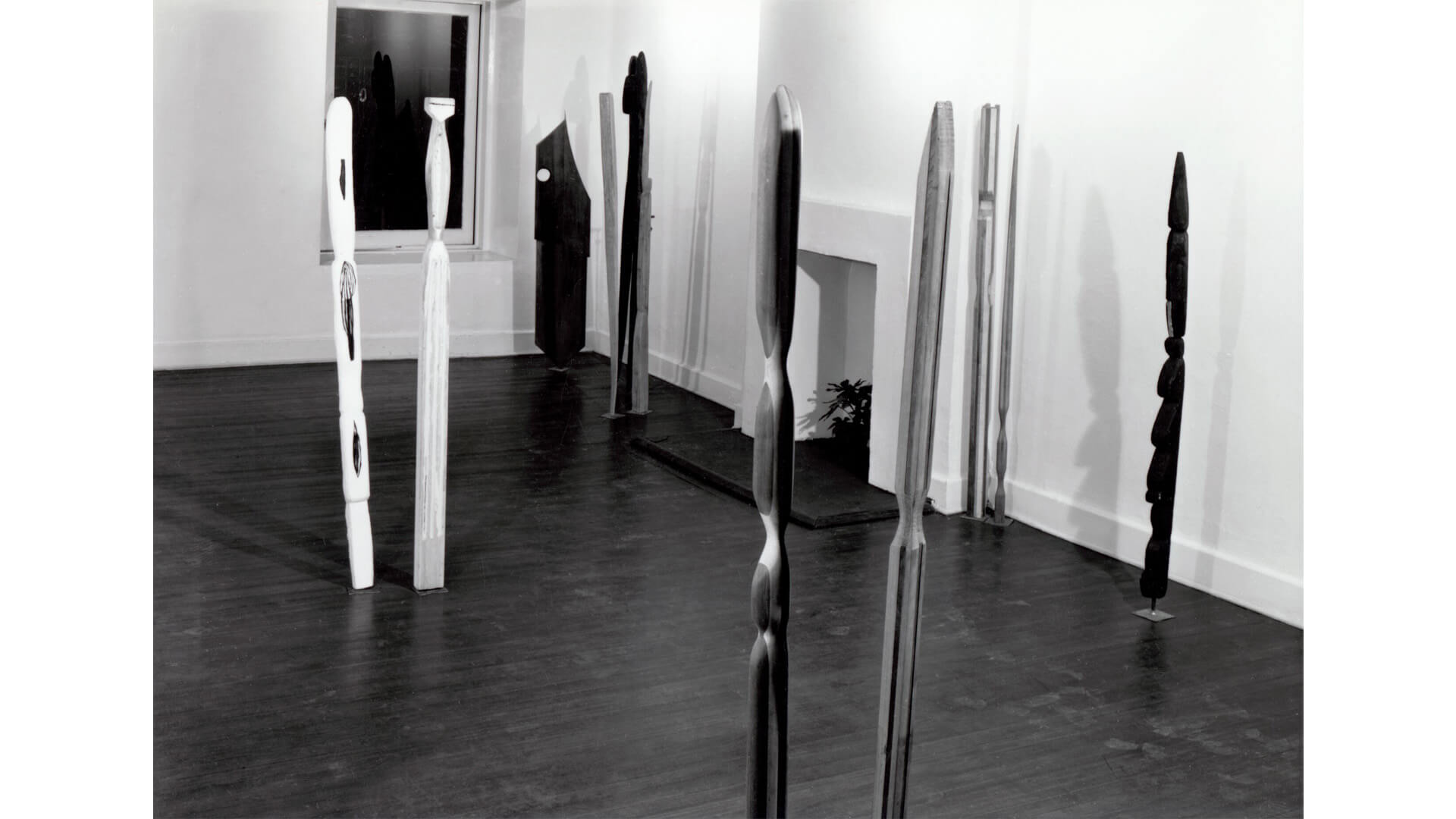
The pictorial elements in the paintings of Newman and Rothko show affinities with the way in which Bourgeois’s sculptures were exhibited as environmental installations at the Peridot Gallery in 1949 and 1950. The distance between things—between the Personages dispersed in a given arrangement, or blocks of color hovering over one another or skinny zips separated by a vast expanse of color—distils the tragedy of the human condition.
Image: Installation view, ‘Louise Bourgeois: Sculptures’ at the Peridot Gallery, New York, NY, 1950 © The Easton Foundation / 2023, ProLitteris, Zurich. Photo: Aaron Siskind
‘What is the explanation of the seemingly insane drive of man to be painter and poet if it is not an act of defiance against man’s fall and an assertion that he return to the Garden of Eden?’—Barnett Newman
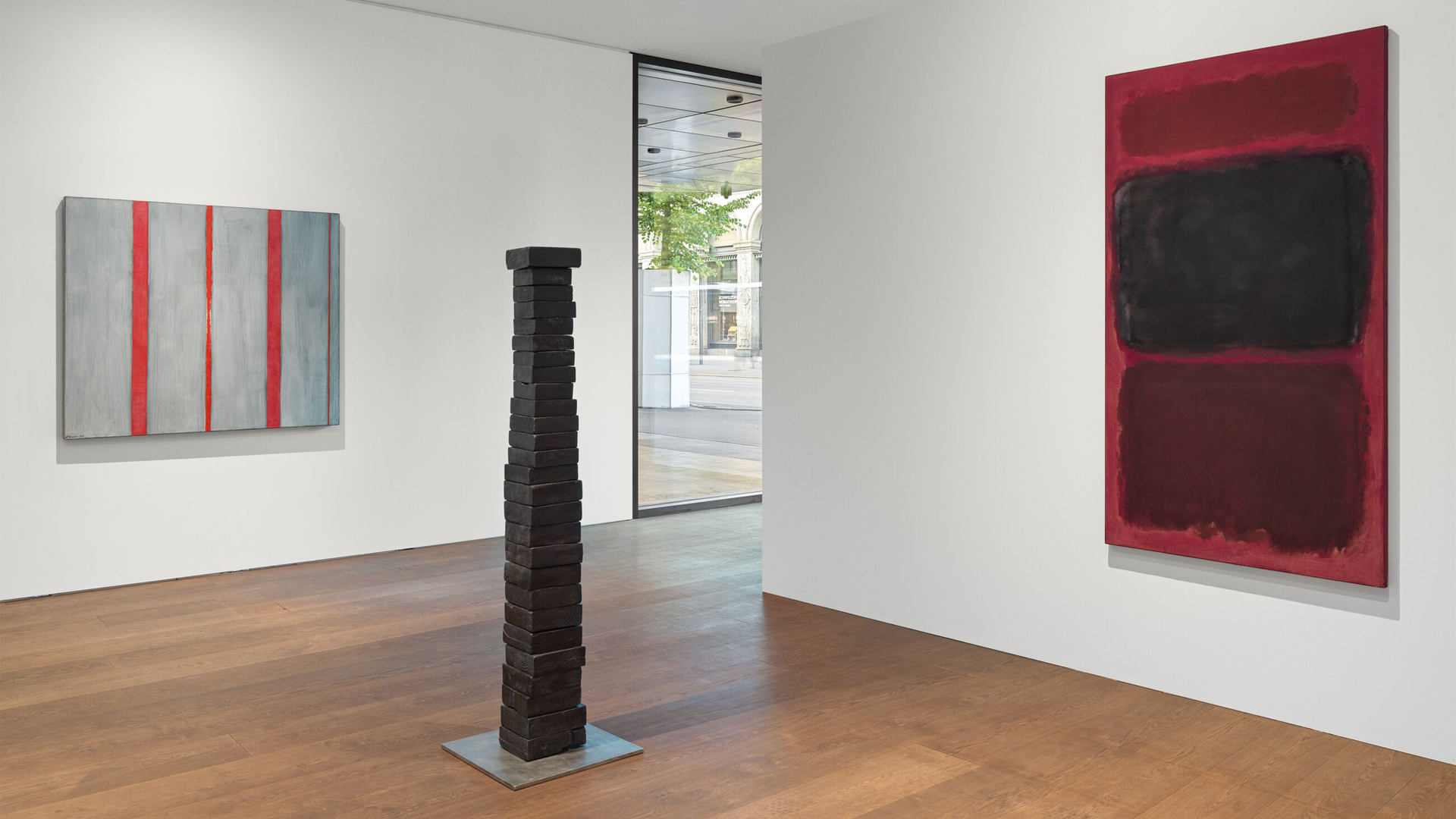
At the same time, it creates a space for the construction of a new order out of the wreckage of the old. A shared biomorphic iconography—plant forms, flowers, seeds and pods, found in works such as Newman’s ‘Genetic Moment’, Rothko’s drawing ‘Untitled’, or Bourgeois’s ‘Spring’—bears witness to this possibility of rebirth.
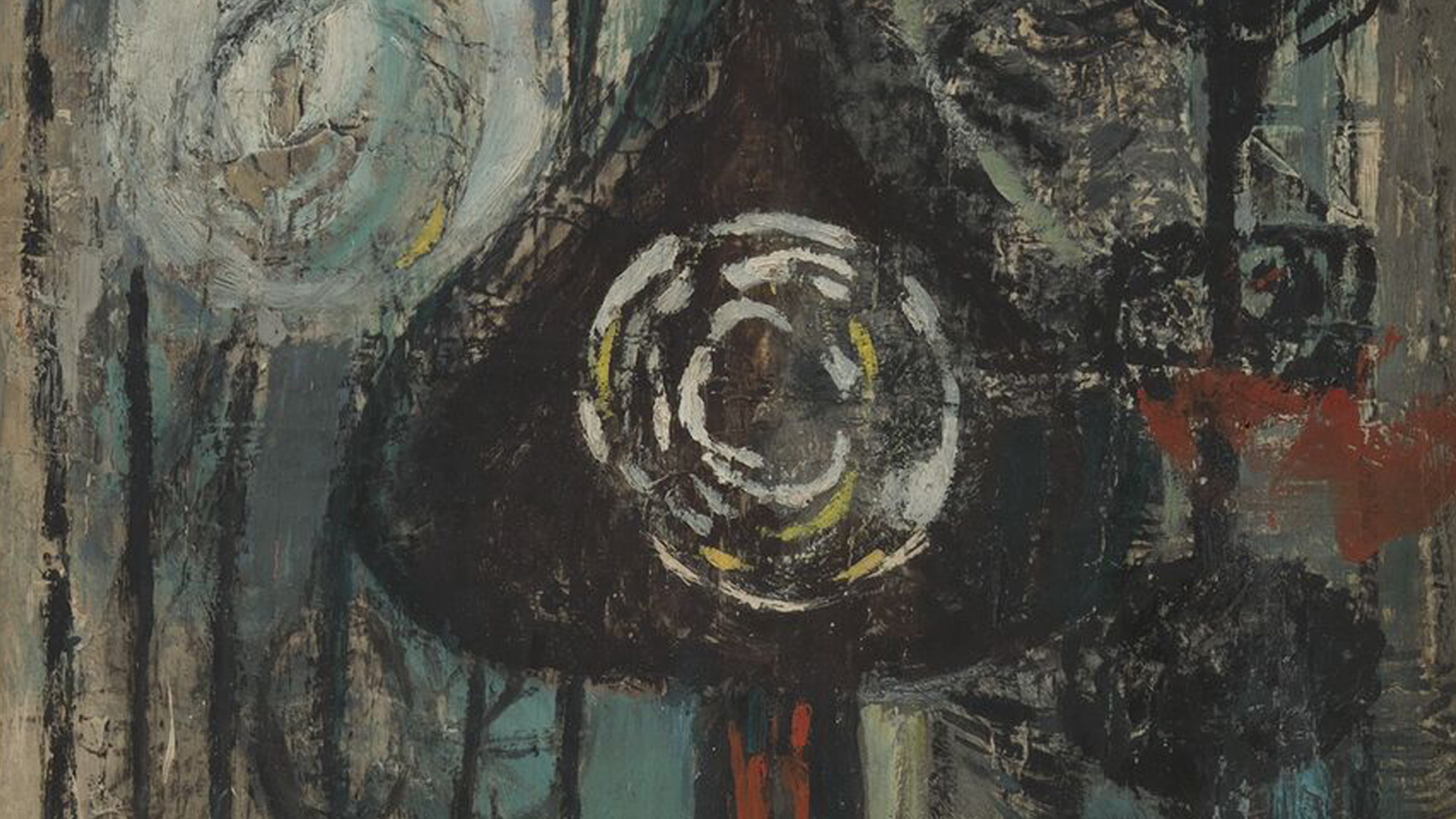
If Newman and Rothko (both of whom were Jewish) felt they were making art about man’s spiritual nature, Bourgeois was more concerned with her unconscious processes. Her forms retain vestiges of the body and often have subtle sexual connotations. Newman and Rothko were preoccupied with the ‘metaphysical secrets’ that lie beyond the visible. To them art was an attempt to attain to the transcendent and the sublime; to her it was a form of acting out.
‘I’m not an abstractionist. I’m not interested in the relationship of color or form or anything else. I’m interested only in expressing basic human emotions: tragedy, emotion, doom, and so on.’—Mark Rothko
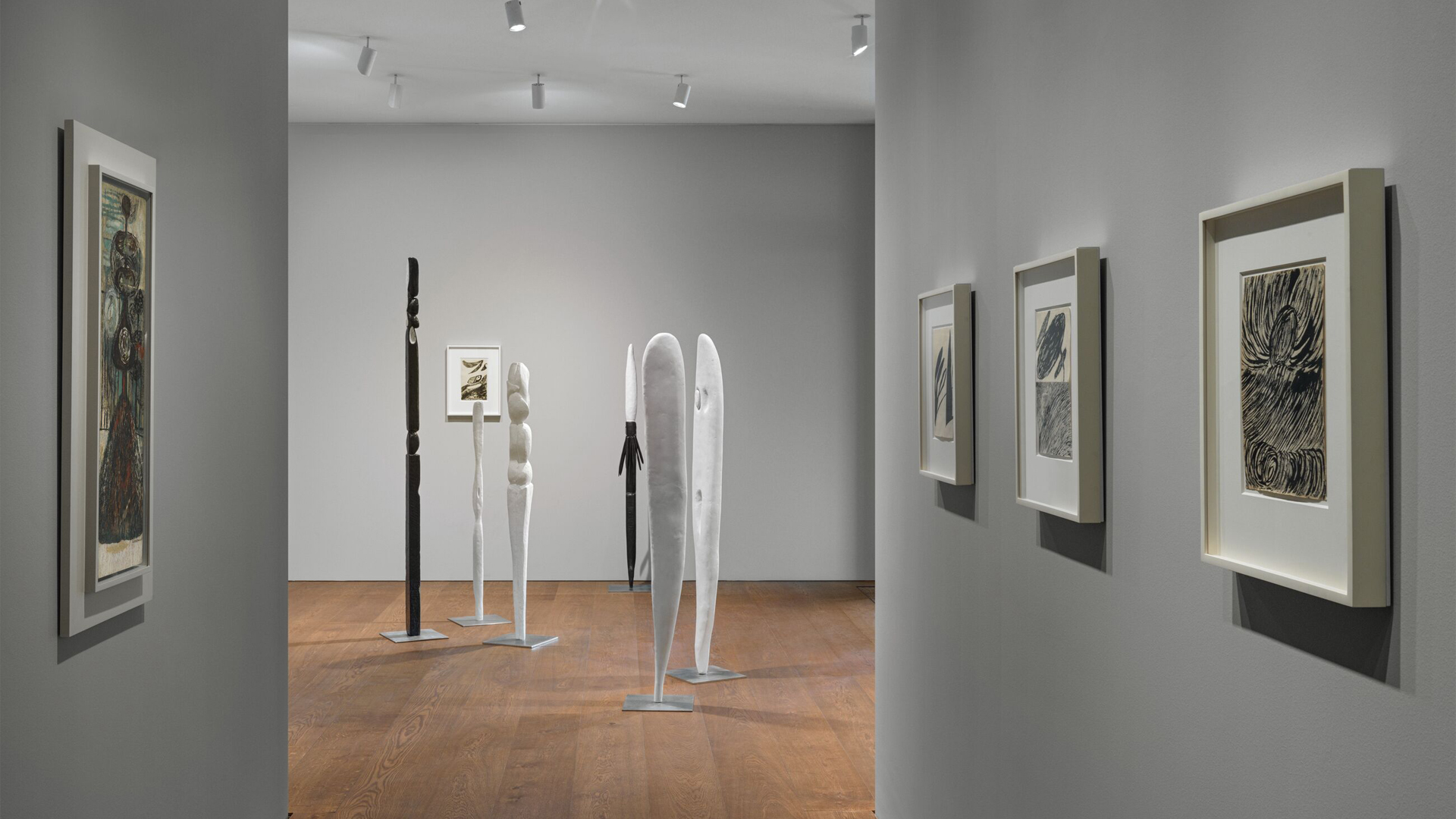
Bourgeois’s monolithic Personages and Newman’s zips affirm the primacy of the vertical, perhaps an expression of the fragile and isolated individual alienated from her surroundings. Her segmented Personages, which are more purely abstract and geometric than the monoliths, align with Rothko’s stacking of rectilinear stains. In this subgroup of Personages, Bourgeois’s organization of discrete segmented elements into a whole bespeaks a desire to reconcile the individual with the collective—a desire she shared with Newman and Rothko.
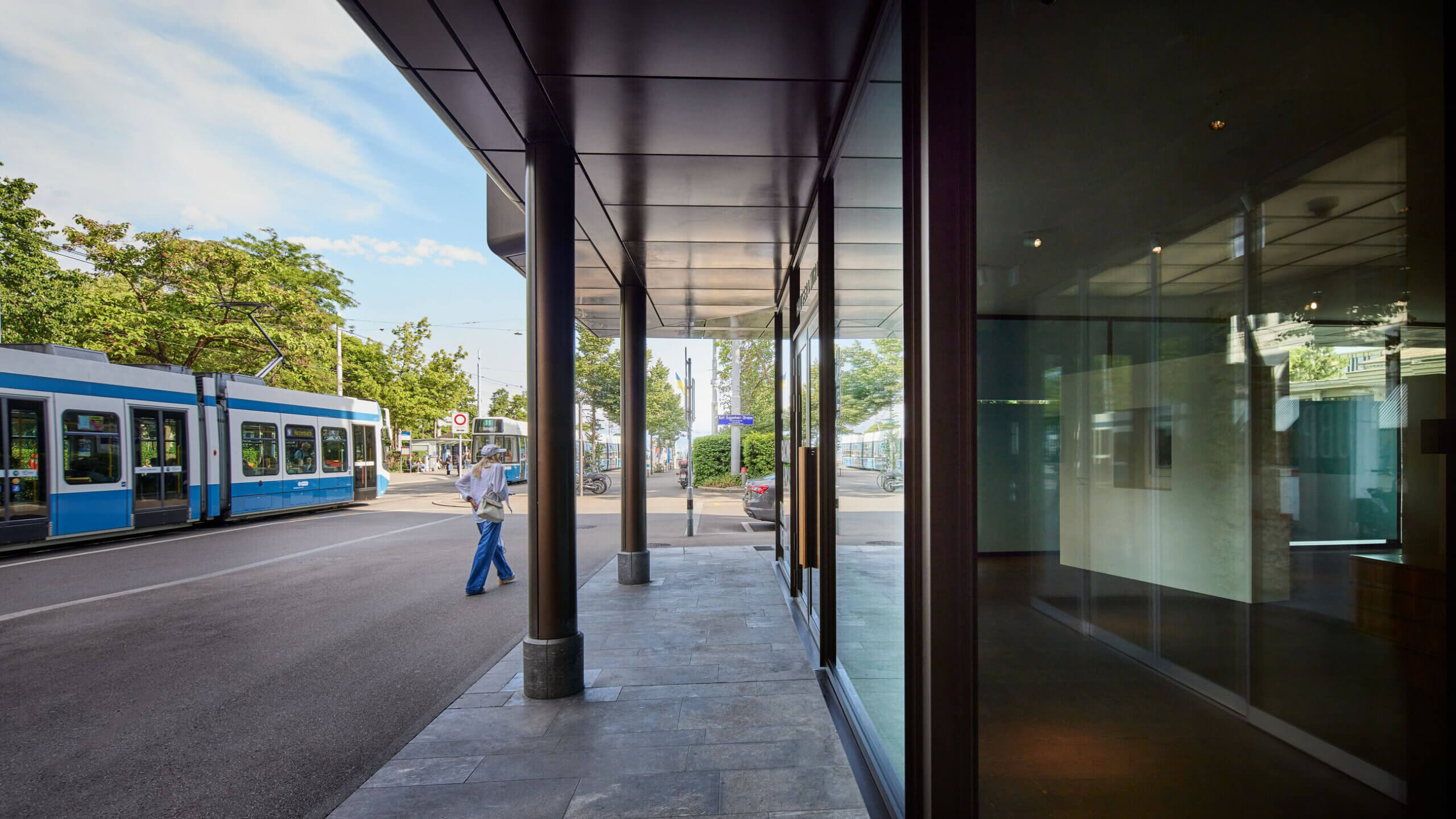
On view in Zurich, Bahnhofstrasse
The gallery is open Tue – Fri 10 am – 6 pm, Sat 11 am – 5 pm. For special opening hours during Zurich Art Weekend and Art Basel, please visit our location page.
© The Easton Foundation / 2023, ProLitteris, Zurich © The Barnett Newman Foundation, New York / 2023, ProLitteris, Zurich © 1998 Kate Rothko Prizel & Christopher Rothko / 2023, ProLitteris, Zurich
Footer image: Louise Bourgeois with her sculptures ‘Quarantania III’ and ‘Brother & Sister’, New York NY, 1979 © The Easton Foundation / 2023, ProLitteris, Zurich. Photo: Eeva Inkeri
About the Artist
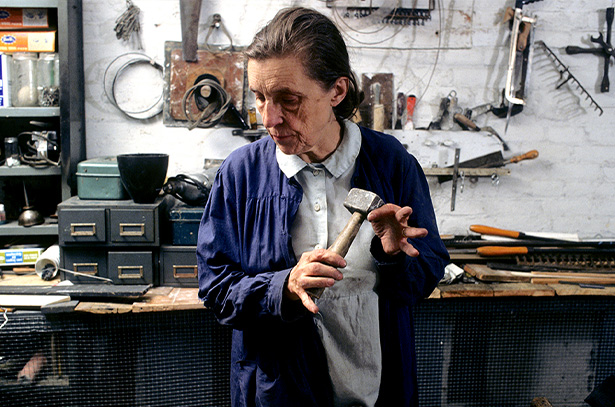
Louise Bourgeois
Born in France in 1911, and working in America from 1938 until her death in 2010, Louise Bourgeois is recognized as one of the most important and influential artists of our time. For over seven decades, Bourgeois’s creative process was fueled by an introspective reality, often rooted in cathartic re-visitations of early childhood trauma and frank examinations of female sexuality. Articulated by recurrent motifs (including body parts, houses and spiders), personal symbolism and psychological release, the conceptual and stylistic complexity of Bourgeois’s oeuvre—employing a variety of genres, media and materials—plays upon the powers of association, memory, fantasy, and fear.
Bourgeois’s work is inextricably entwined with her life and experiences: fathoming the depths of emotion and psychology across two- and three-dimensional planes of expression. ‘Art,’ as she once remarked in an interview, ‘is the experience, the re-experience of a trauma.’ Arising from distinct and highly individualized processes of conceptualization, Bourgeois's multiplicity of forms and materials enact a perpetual play: at once embedding and conjuring emotions, only to dispel and disperse their psychological grasp. Employing motifs, dramatic colors, dense skeins of thread, and vast variety of media, Bourgeois's distinctive symbolic code enmeshes the complexities of the human experience and individual introspection.
Rather than pursuing formalist concerns for their own sake, Bourgeois endeavored to find the most appropriate means of expressing her ideas and emotions, combining a wide range of materials—variously, fabric, plaster, latex, marble and bronze—with an endless repertoire of found objects. Although her oeuvre traverses the realms of painting, drawing, printmaking, and performance, Bourgeois remains best known for her work in sculpture.
Bourgeois’s early works include her distinct 'Personages' from the late 1940s and early 1950s; a series of free-standing sculptures which reference the human figure and various urban structures, including skyscrapers. The ‘Personages’ served as physical surrogates for the friends and family Bourgeois had left behind in France, while also highlighting an interest in architecture dating back to her childhood. Her installation of these sculptures as clustered ‘environments’ in 1949 and 1950 foreshadowed the immersive encounters of installation art twenty years before the genre’s rise to prominence.
Bourgeois’s work was included in the seminal exhibition ‘Eccentric Abstraction,’ curated by Lucy Lippard for New York's Fischbach Gallery in 1966. Major breakthroughs on the international scene followed with The Museum of Modern Art in New York's 1982 retrospective of her work; Bourgeois's participation in Documenta IX in 1992; and her representation of the United States at the 45th Venice Biennale in 1993.
In 2001, Bourgeois was the first artist commissioned to fill the Tate Modern’s cavernous Turbine Hall. The Tate Modern’s 2007 retrospective of her works, which subsequently traveled to the Centre Pompidou in Paris; The Guggenheim Museum in New York; The Museum of Contemporary Art in Los Angeles; and The Hirshhorn Museum & Sculpture Garden in Washington D.C., cemented her legacy as a foremost grande dame of late Modernism.
Header image: Louise Bourgeois, ARCHED FIGURE, 1993 © The Easton Foundation/VAGA, NY, Photo: Christopher Burke
Inquire about available works
On view now through 16 September 2023 at Hauser & Wirth Zurich, Bahnhofstrasse.
Current Exhibitions
1 / 12
